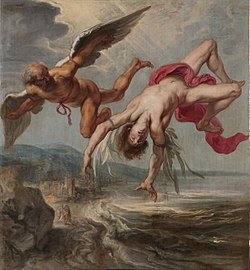By Chance He Did Rove… – by Kirsty Hartsiotis
 As some of you may know, I lead a double life. On some days I am the storyteller and writer you see here, but on others I am the Curator of Decorative Arts and Designated Collection at The Wilson, Cheltenham’s art gallery and museum. There are many synergies between the two roles – both involve telling stories, although often in different ways. The collection at Cheltenham I spend most of my time with is the Arts and Crafts Movement
collection, which charts the story of the movement from William Morris to contemporary makers inspired by the movement today. Hang on, I can hear you saying, what’s this got to do with stories and with Gloucestershire’s ghosts? Well, when we first started looking at which stories we wanted to include in the book, there was one I knew would have to go in right from the start. In our book, it’s called ‘Lady Juliana’s Vault’…
As some of you may know, I lead a double life. On some days I am the storyteller and writer you see here, but on others I am the Curator of Decorative Arts and Designated Collection at The Wilson, Cheltenham’s art gallery and museum. There are many synergies between the two roles – both involve telling stories, although often in different ways. The collection at Cheltenham I spend most of my time with is the Arts and Crafts Movement
collection, which charts the story of the movement from William Morris to contemporary makers inspired by the movement today. Hang on, I can hear you saying, what’s this got to do with stories and with Gloucestershire’s ghosts? Well, when we first started looking at which stories we wanted to include in the book, there was one I knew would have to go in right from the start. In our book, it’s called ‘Lady Juliana’s Vault’…
But what does that have to do with the Arts and Crafts Movement? If you read it, you’ll discover that one of the characters in it is an Arts and Crafts architect by the name of Norman Jewson. The story originally comes from Jewson’s wonderful account of his arrival and subsequent life in the Cotswolds, By Chance I Did Rove. A quick scout on the internet tells you that this excellent book is sadly out of print, but if you do get a chance to read it – well, do! Jewson was originally from Norfolk, and, as a young man in 1907, he decided to set out with a donkey and trap to sketch in the Cotswolds, and, on the way, to visit his hero, the architect Ernest Gimson.
He arrived in Sapperton, was welcomed by Gimson – and stayed for the rest of his life. He completed his training under Gimson, and he married another of the Sapperton architect’s daughters, Mary Barnsley, the daughter of Ernest Barnsley. Gimson became his ‘greatest friend, and very much more.’ He said Gimson ‘was the most inspiring man I ever met’, but he made many friends in the area. One important friend was the etcher Fred Griggs, who lived in Chipping Campden. Griggs contributed greatly to the town, and it may well have been Griggs who started our ghost tale off by being the person to recommend Jewson as an architect to assist when a crack appeared in one of the piers in St James’ church.
Jewson ends up an unwitting participant in an older tale – and tragedy ensues, though happily not for him, and Lady Juliana walks again. Most of Jewson’s book is concerned with the Cotswolds and the people meets whilst there – so this tale stands out as one that must have made an impression on him. Strange, though, as he actually owned and restored one of the most haunted houses in Gloucestershire, Owlpen Manor , which is thick with ghosts, such as Queen Margaret of Anjou, Henry VI’s queen, who is said to have visited the manor on her way to the Battle of Tewkesbury at the manor house – her last happy night, as the battle spelled the end of the Lancastrian cause, and her only son, Prince Edward, was killed in the aftermath of the battle. She returns to haunt the manor, and was seen by Birmingham evacuees during the Second World War, who said, ‘a lovely lady with long sleeves and dress all trimmed with fur, and with a funny peaked hat that had a long veil hanging down behind’ had come into their room.’ [1] But it seems she never revealed herself to Jewson…
Jewson became one of the most sensitive restorers of Cotswold architecture, and built buildings that blended seamlessly with their environment. He said, ‘My own buildings I wanted to have the basic qualities of the best old houses of their locality, built in the local traditional way in the local materials, but not copying the details which properly belonged to the period in which they were built… I hoped that my buildings would at least have good manners and be able to take their natural place in their surroundings without offence.’ [2]
Lady Juliana’s ghost, however, was seen flitting about the ruins of a far more ostentatious piece of architecture, and we’ll hear her story in the next blog. If you’d like to find out more about the Arts and Crafts Movement in the Cotswolds, and the utopian projects of the men and women who made their lives here, why not go to my new exhibition, Crafting Change: Community, Protest, Utopia which runs until 5 June and tells how communities in the Cotswolds, Cheltenham and beyond found new ways of living, protesting, and dreaming of creating a better world for themselves and the future.
[1] ‘The Ghosts of Owlpen’ http://www.owlpen.com/history/owlpen-ghosts
[2] All Jewson quotes from By Chance I Did Rove (Oaknoll Press, 1973)
The post By Chance He Did Rove… – by Kirsty Hartsiotis appeared first on Palace of Memory.







